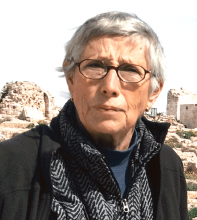You are here
UNESCO listing of Tell es-Sultan safeguards Palestinians’ connection to their homeland
Oct 04,2023 - Last updated at Oct 04,2023
Jericho's Tell es-Sultan has belatedly become a World Heritage Site after being proclaimed by UNESCO as the "oldest fortified city in the world". The "tell", or mound, contains evidence of prehistoric human life dating back to the ninth millennium BC. Neolithic (4,300-2,000 BC) and Bronze (2,000-700 BC) Age fortifications, towers, trenches, remains of palaces and of a perennial spring were also found at the site, located between the modern city of Jericho and the Dead Sea in the Israeli-occupied and colonised West Bank.
UNESCO, the UN's cultural organisation, declared "Tell es-Sultan "exhibits the interchange of cultural and spiritual ideologies with civil living, creating developments in architecture, technology, arts and the domestication of plants and animals, particularly during the Neolithic and Bronze ages.
"Ancient Jericho dates back more than 10,000 years and 4,000 years before any other similarly fortified city. Its inhabitants were among the first humans to rely on agriculture of subsistence, which is attested by granaries and stone tools used for harvest."
UNESCO added, "Early Bronze Age archaeological material shows signs of urban planning. Vestiges from the Middle Bronze Age reveal the presence of a large Canaanite city-state occupied by a socially complex population."
Tourism Ministry Director for Jericho Ayad Hamdan told Al Jazeera that Tell es-Sultan is the settlement where Palestinians "moved from hunting and gathering to agriculture and animal domestication".
In another interview with Al Jazeera, Abu Dis University Archaeology Professor Hani Noureldin said the exceptional site “confirms the extent of the importance of human civilisation in Palestine". Tell es-Sultan “represents the civil development that characterised the Fertile Crescent region in general, Mesopotamia and the Levant, during the third and second millennium BC”. The site's inhabitants’ creativity “was reflected in the burial rituals, which included decorating human skulls with a smooth layer of plaster before painting [them] with natural colours”.
Commenting on the current significance of UNESCO's designation, Hamdan said, it “strengthens Palestinian identity and international recognition”. His words challenge not only Israel's claim to the whole of Palestine but also Israel's efforts to erase the Palestinian people by denying their multi-millennial connection with their land.
Tell es-Sultan pre-dates the defection tfrom the Canaanites of pastoral nomadic Israelite tribes who espoused a separate religion. They inhabited a part of Canaan during the Iron Age which coincided with the collapse of the Late Bronze Age (12th centry BC). The Israelites fled Canaan for Egypt due to drought, were enslaved, and escaped in about 1,290. Two Israelite kingdoms were formed in the 11th century.
There are three other UNESCO Heritage Sites in Palestine: The Church of the Nativity and the pilgrimage route in Bethlehem, the “cultural landscape” of the village of Battir south of Jerusalem, and the old city of Al Khalil/Hebron. UNESCO’s designation of the latter generated Israel's ire as the city hosts Al Ibrahimi Mosque/The tomb of the Patriarchs built in the 1st century AD to protect the tombs of the patriarch Ibrahim/Abraham and his family. This is a pilgrimage site for Judaism, Christianity and Islam. The old city is divided with 120,000 Palestinians living in one sector and 30,000 Palestinians in the other with 450-700 Israelis. Palestinian freedom of movement is circumscribed by the Israeli army which protects settlers who attack Palestinians.
Israel's Foreign Ministry castigated UNESCO's designation of Tell es-Sultan, arguing that the Palestinians are making "cynical use" of the organisation and politicising it. Israel is the party guilty of politicising the organisation. After Palestine was admitted in 2011, the US halted payment of its contributions. Israel and its forever loyal ally the US resigned from UNESCO in 2018. The Israeli government and the Trump administration claimed anti-Israel bias. The Biden administration rejoined the organisation in July 2023 on the pretext that in Washington's absence, Beijing was as the assuming a leading role. The US is also paying off $619 million in arrears. Israel, which became a member in 1949, has not rejoined.
There are nine World Heritage Sites in Israel. The Baha'i holy places in Haifa and Western Galilee, the Biblical Tells of Megiddo, Hazor and Be'er in the north and the Negev, the desert cities of the Negev, the Masada fortress, Acre, Tel Aviv, Mount Carmel sites of human evolution, caves in the Judean lowlands and the Necropolis of Beit She'arim in Haifa District.
By citing Palestinian sites in the Israeli occupied West Bank UNESCO, 21.2 per cent of geographic Palestine, UNESCO appears to be trying to ensure that the native Palestinians are not wiped off the map of their multi-millennial homeland. UNESCO is also ensuring that Palestinians are not deprived of their history while their land is rapidly being expropriated by Israel and its illegal colonists. The name Palestine, derived from the Philistines who settled in coastal Gaza in the 12th century BC, was applied to the whole country by the Romans in 70 AD. The virtual state of Palestine has been recognised by 139 of the 193 UN members and is regarded as a non-voting observer state by the UN.
Israel was admitted to UN membership in 1949 on condition that it implemented UN resolutions on Palestine, including the December 1948 resolution calling for the repatriation of Palestinian refugees driven from their homes during Israel’s 1948 war of establishment. This condition has been ignored by Israel, the UN and the international community.













